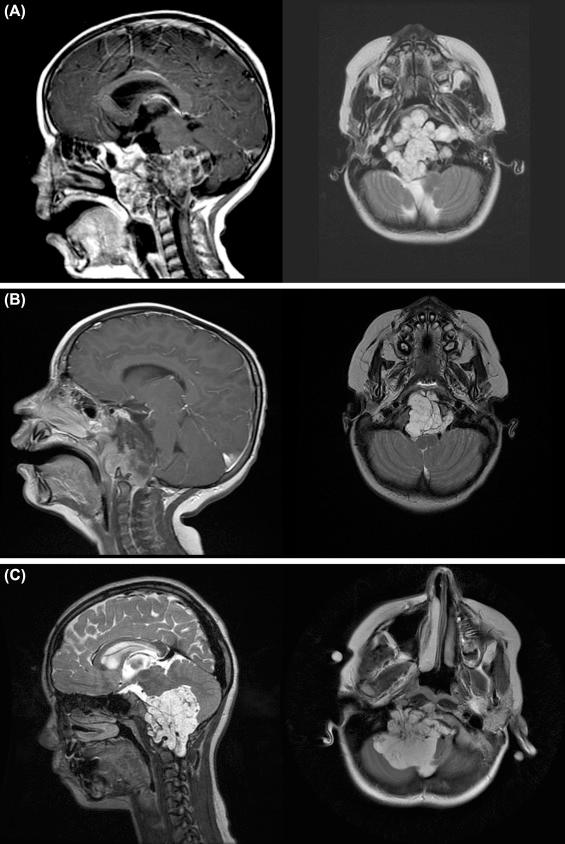Physical Address
304 North Cardinal St.
Dorchester Center, MA 02124
© 2018 Elsevier Inc. All rights reserved. Please note that the copyright for the original figures submitted by the contributors is owned by Contributors.
Cranial base chondroid tumors are rare in the pediatric population. Chordomas constitute only 3% of all primary bone tumors, of which fewer than 5% (reported range: 2%–15%) occur in children (<21 years age). In adults, chordomas occur predominantly in males, with a male to female ratio of about 2:1, but in the pediatric population they may have equal frequency between male and female patients ; however, our series would suggest that the male predilection seen in adults is preserved. Another unique feature of pediatric chordomas is their predilection for the skull base. In adults, most chordomas arise in the sacrococcygeal area and about a third arise at the skull base. In contrast, nearly 75% of pediatric tumors involve the skull base followed by the mobile spine and then the sacrococcygeal area. The clivus is the most common location; almost all tumors in patients younger than 5 years occur there. Older children can have tumors in the maxilla, orbit, nasopharynx, and axial spine. Rare locations such as the gluteal muscle and mediastinum have also been reported. The mean age of diagnosis in the pediatric population is about 10 years.
Even though chondrosarcoma is the third most common primary bone tumor (15%–22%), it is rare in children. About 4% of all cases occur in patients younger than 21 years. Chondrosarcomas can be primary or secondary, arising from benign cartilaginous lesions. As in adults, there is a male predominance. Irradiation of chondrosarcomas, particularly in children, carries significant risk for the development of bone sarcomas (commonly osteosarcoma and fibrosarcoma). Chondrosarcomas account for 9% of all cases of radiation-induced bone sarcomas in children. Although, as in adults, pediatric chondrosarcomas present more commonly in the pelvis, extremities, and the thoracic cage, there is a four times higher frequency of craniofacial tumors in children. Huvos reported a 13% frequency of craniofacial tumors in 79 pediatric chondrosarcomas, compared with the 3.5% frequency reported in adults.
In a review of 79 cases of cranial chordomas in children by Al-Mefty, patients younger than 5 years often presented with symptoms of elevated intracranial pressure and long tract signs. This may reflect the higher incidence of clival lesions in this age group. With this exception, children with chordomas and chondrosarcomas present with signs and symptoms similar to those of adults. Older patients (5–20 years) with cranial lesions often present with headache and double vision (abducens nerve palsy). Depending on the location of the tumor, they can also present with hypoglossal nerve palsy, nasal obstruction, dysphagia, and ataxia. Patients may also present with a retropharyngeal mass with associated breathing and swallowing problems ( Fig. 36.1 ).

The preoperative evaluation is important to fully document the patient’s deficits. Physical examination should include a complete assessment of cranial nerve function. In patients with nasal congestion or airway obstruction, evaluation by otolaryngology should be performed and include nasal endoscopy. Symptoms of hearing loss or vestibular dysfunction can be evaluated further with audiometric testing and vestibular tests if necessary. Lower cranial nerve dysfunction may require evaluation of swallowing function and aspiration risk with a functional endoscopic examination of swallowing or radiography (barium esophagram).
Patients with sacrococcygeal chordomas most often present with pain, constipation, and less often, neurologic symptoms related to the involvement of the cauda equine. About 90% will have a palpable presacral mass on rectal examination. Pain and a palpable mass are also presenting features of pelvic chondrosarcomas.
Become a Clinical Tree membership for Full access and enjoy Unlimited articles
If you are a member. Log in here